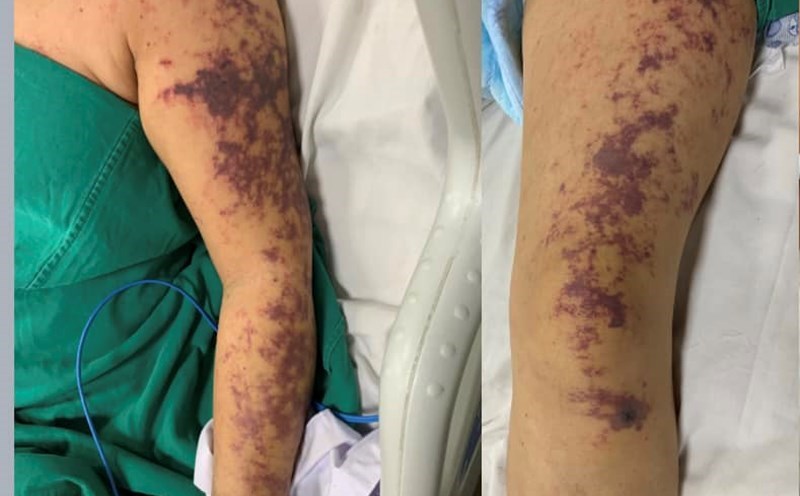According to the Hanoi Center for Disease Control (CDC), since the beginning of the year, the city has recorded 7 cases of streptococcus Cervical fever, including the first death in 2025.
The patient died of the disease on July 16 with symptoms of high fever, headache, and fatigue. On July 21, the patient was admitted to Dan Phuong hospital with a high fever of 39 degrees, headache, purple rashes on his face, ears, abdomen, and chest. The patient was diagnosed with septic shock, monitored for streptococcus purple and transferred to Bach Mai Hospital.
At the A9 Emergency Center - Bach Mai Hospital, the patient had respiratory failure and purple in many areas of the body such as the face, ears, chest, and thighs. Although he has been actively resuscitated, his condition has not improved. The family asked to take the patient home and the patient later died. The results of the blood culture test determined to be positive for pig connective bacteria.
The Hanoi CDC said that in addition to cases recorded in the area, some neighboring provinces have also had cases of streptococcus liver disease and some deaths.
This unit warned that streptococcal bacteria can be transmitted to humans through direct contact with sick pigs or healthy pigs carrying bacteria, especially through open wounds on the skin.
Therefore, not only livestock farmers, but also slaughterers, meat sellers, housewives, pork processing people or those who eat pork soup and undercooked meat are at risk of getting sick.
In addition to the path through wounds, streptococcusatedatedatedatedatedatedatedatedatedatedatedatedatedatedatedatedated pigs can also be transmitted through droppockets in the respiratory tract and invade the digestive tract when eating sick pork that has not been thoroughly cooked.
Common symptoms include: high fever, headache, nausea, vomiting, tightness of the throat, earaches, hearing loss or coma. The disease can progress rapidly, causing pusomide inflammation, sepsis, cardiovascular colony, low blood pressure, respiratory failure, multiple organ failure and death.
Some cases of digestive toxicity include persistent diarrhea, fluid or bloody stools. In addition, people infected with the disease may be afraid of light, convulsions, vomiting...
To prevent the disease, the health sector recommends that people do not slaughter sick, dead pigs or consume meat from pigs of unknown origin. When coming into contact, slaughtering or processing pork, wear gloves, masks and use protective gear; wash your hands with soap after coming into contact with raw meat; cook the meat and organs thoroughly (including the urine) before eating. Absolutely do not eat raw or raw pork soup or pork.
People with open wounds on the skin should avoid contact with raw pork or raw pork. In particular, when there are suspicious signs after contact or eating pork, it is necessary to go to a medical facility immediately for timely examination and treatment.











